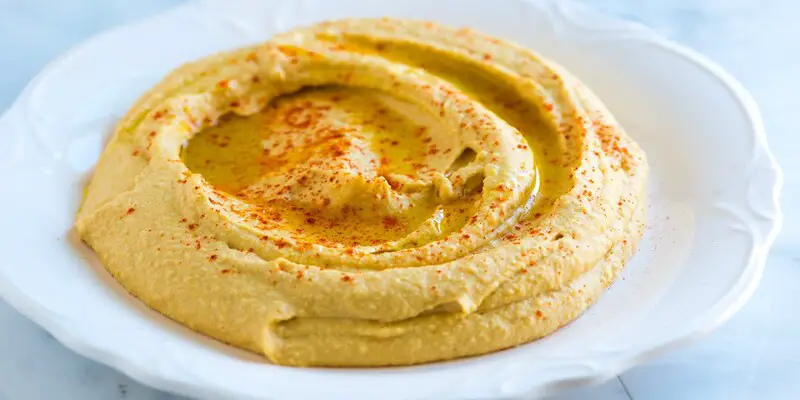Advertisement
How Hummus Can Assist You With Beating Constipation
Mar 17, 2024 By Madison Evans
Chickpeas that have been cooked and pounded, tahini, olive oil, lemon juice, garlic, and flavors are consolidated to make hummus a tasty and energizing plunge. Hummus is a staple of many Center Eastern and Mediterranean dishes and is undeniably generally consumed as a nutritious tidbit or bite. Bread, wafers, pita chips, new vegetables, mixed greens, sandwiches, and wraps all pair well with hummus.
Rudiments Of Hummus
An exemplary Center Eastern spread, hummus is made with chickpeas, tahini glue, olive oil, lemon juice, garlic, and different spices and flavors. Even though there are numerous alternate ways of getting a charge out of hummus, it is commonly filled in as a plunge for pita bread or veggies. Albeit a few people like to set up their hummus at home, it is currently broadly open and arrives in a scope of flavors, all things considered supermarkets.
How Hummus Can Help Your Absorption And Clogging
There are different ways that hummus could help with stoppage alleviation and absorption.
Giving Fiber:
Dietary fiber, vital for a sound gastrointestinal system, is available in hummus. To work with excretion and reduce stress, fiber can help to mellow and mass the stool. Fiber can likewise support advancing solid discharge, which helps hold the stool back from staying in the colon for a lengthy time frame and turning hard and dry.
Giving Probiotics:
Probiotics are great microbes that live in the stomach and help in assimilation. They are available in hummus. The settlement of microscopic organisms that live in the stomach-related framework, known as the stomach microbiota, can be offset with the guidance of probiotics. The improvement of pathogenic microorganisms, infections, or parasites that can prompt diseases or irritation can be achieved by keeping a sound stomach microbiota.
Giving Sound Fats:
Monounsaturated and polyunsaturated unsaturated fats, plentiful in olive oil and tahini, are the essential wellsprings of energizing fats tracked down in hummus. These lipids might work with the stool's travel into the butt by greasing it up. Also, since clogging and different ailments can hurt the gastrointestinal system, solid fats can help decrease aggravation and advance healing. Supplement thick fats can likewise work with ingesting fat-solvent nutrients, including A, D, E, and K.
Giving Nutrients And Minerals:
Various nutrients and minerals are fundamental for solid absorption, and general prosperity can be tracked down in hummus. For example, the L-ascorbic acid in hummus can reinforce the safe framework and guard against gastrointestinal illnesses. Magnesium is another fixing in hummus that might support quieting digestive muscles and forestalling spasms or fits. Iron is one more fixing in hummus that can be utilized to fix or forestall sickliness, which results in low red platelet counts and causes shortcomings, fatigue, and pale coloring.
The Best Way to Remember Hummus for Your Diet

Because of its far and wide accessibility at supermarkets, restaurants, and on the web, hummus is a straightforward food to integrate into your eating routine. Furthermore, you can set up your hummus at home using a food processor or blender and a couple of fundamental parts coordinated in a recipe. Here are a few pointers for including hummus in your eating regimen:
Pick Or Make Hummus With Excellent Fixings:
Select or plan hummus utilizing premium parts, like additional virgin olive oil, regular tahini, new lemon juice, garlic, and flavors, or utilize natural chickpeas. Avoid hummus with fake tones, flavors, additives, or added sugars, as these fixings can think twice about hummus' dietary benefits.
Eat Hummus With High-Fibre Food Sources:
Eat wheat bread, saltines, pita chips, and new veggies like carrots, celery, cucumbers, and chime peppers with hummus. These feasts are high in fiber. This can work on the upsides of hummus for clogging help and processing while likewise expanding fiber utilization. To make plates of mixed greens, sandwiches, wraps, and bowls more significant and sustaining, you can finish them with hummus.
Eat Hummus With Some Restraint:
Hummus is an unhealthy dish that, whenever consumed in overabundance, can prompt weight gain, so eat it with some restraint. In specific cases, hummus can likewise bring about gas, bulging, or looseness of the bowels especially in those with an aversion to flavors, garlic, or vegetables. Around 2 tablespoons (30 grams) is an OK serving size of hummus, giving around 70 calories, 5 grams of fat, 4 grams of carbs, and 2 grams of protein.
Drink A Lot Of Water:

Water is significant for processing and hydration, so drink a ton of it. Water can help with the disintegration of the fiber, shaping a gel-like substance that relaxes and works with the section of stool. Furthermore, water can assist the body with disposing of side-effects and poisons while forestalling drying out, which can prompt blockage. If you practice or live in a hot locale daily, try to have eight glasses of water or more.
Conclusion
A heavenly and stimulating plunge that can be utilized to treat or forestall clogging is hummus. Probiotics, fiber, solid fats, nutrients, and minerals found in hummus help to adjust stomach vegetation, grease up a stool, fortify the safe framework, simplify digestive pressure, and relax and build stool.







